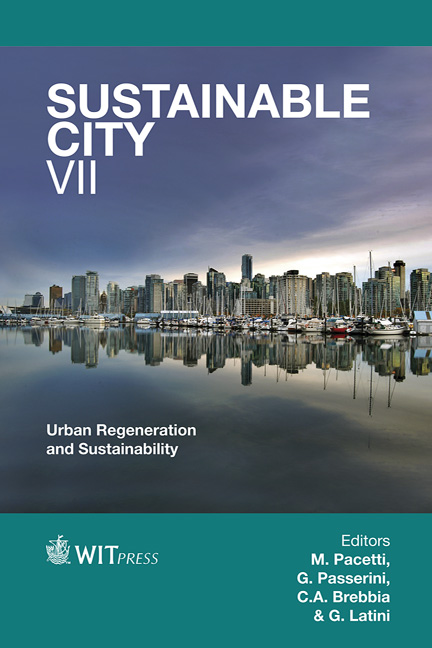Influence Of Urban Forms On Social Sustainability Of Indian Cities
Price
Free (open access)
Transaction
Volume
155
Pages
15
Published
2012
Size
713 kb
Paper DOI
10.2495/SC120662
Copyright
WIT Press
Author(s)
S. Hemani, A. K. Das & D. Rudlin
Abstract
Amidst huge pressures of development and accelerated urbanization faced by Indian cities, the social dimension, an important component of sustainable development, has largely been overlooked. Today, Indian cities have abandoned their pre-industrial socio-physical form and have become a patchwork of traditional, informal and newly planned areas. The former two are suffering from despair while the latter are new wealth enclaves that take-up a major share of urban growth. The country’s GDP has grown by 9% but poverty has risen and social exclusion has become acute. The research explores the impact of these momentous changes on the future shape of Indian cities that are undergoing intense urbanisation. It asks; what is social sustainability in the Indian context and how do the urban forms perform in fostering it? Based on existing wide ranging secondary data, the research clarifies an understanding of social sustainability, its attributes and possible associations with urban form. Through empirical research of three distinct and prominent urban forms of Ahmedabad in Gujarat, the relationship between different aspects of urban form and social sustainability is tested. The evidence is further cross referenced with a comparative atlas based on different scaled maps for each case study area. Keywords: sustainable development, social sustainability, urban form, social exclusion, urban divide, mapping. 1 Introduction The social dimension is an important component of sustainable development but one that has been largely overlooked in Indian cities amidst huge development pressures and fast-forwarded urbanism. While sustainable development
Keywords
sustainable development, social sustainability, urban form, social exclusion, urban divide, mapping.





